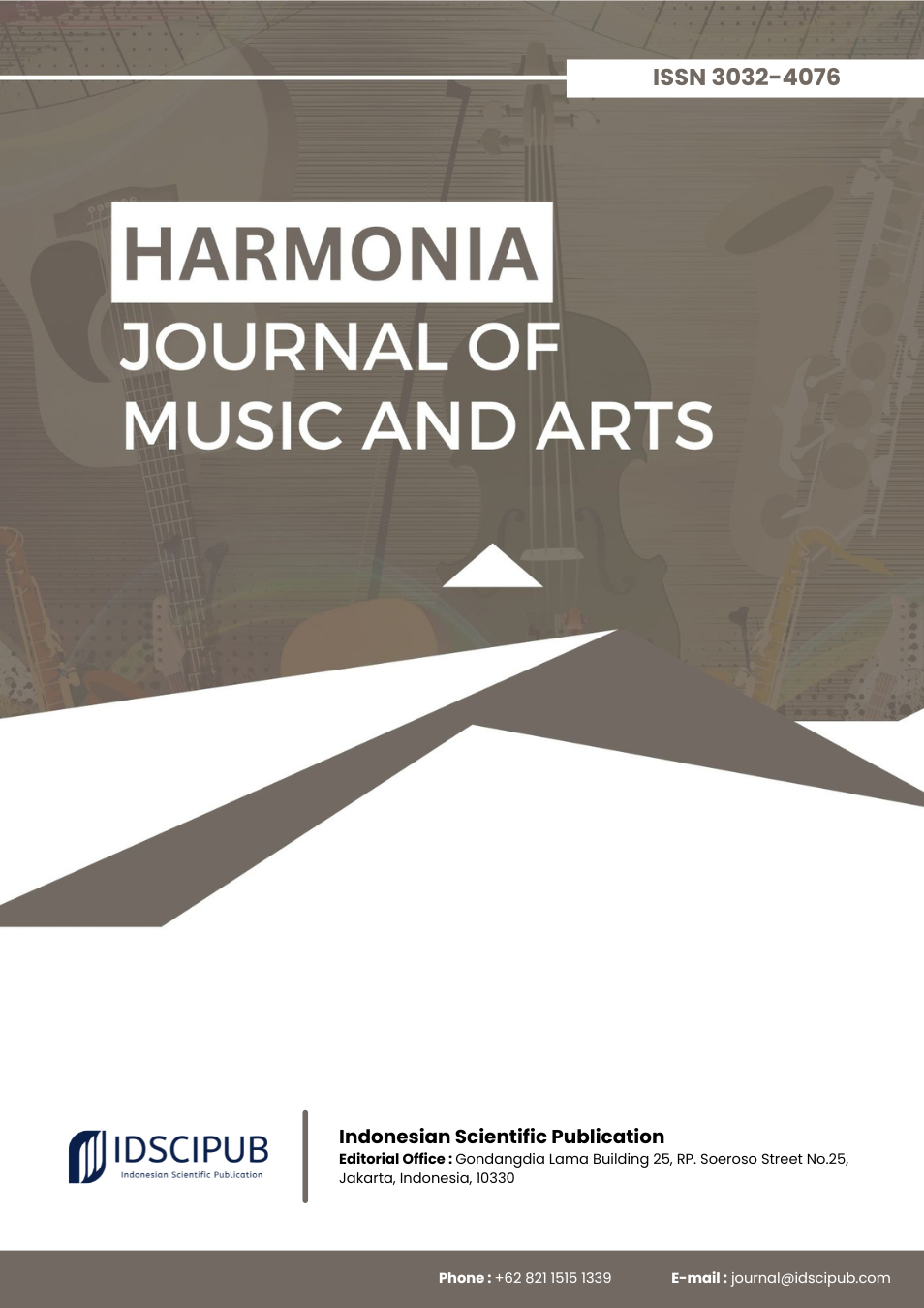Reframing Musical Expressivity: Cognitive, Relational, and Pedagogical Dimensions
DOI:
https://doi.org/10.61978/harmonia.v2i1.896Keywords:
Musical Expressivity, Performance Evaluation, Accompaniment Quality, Attentional Focus, Mindfulness in Music, Music Education, Audience PerceptionAbstract
This narrative review explores the determinants of musical expressivity in performance, focusing on attentional focus, accompaniment quality, and mindfulness-based strategies as critical factors influencing perception and evaluation. The study aimed to synthesize empirical findings across music psychology, pedagogy, and performance studies to develop an integrative understanding of expressivity. Literature was collected systematically through Scopus, Web of Science, and Google Scholar, using targeted keyword combinations and applying rigorous inclusion and exclusion criteria. The review incorporated diverse methodologies, including experimental, cohort, and case study designs, to capture the multidimensional nature of expressivity.Results revealed that attentional focus significantly shapes audience evaluations, demonstrating that perception is mediated by cognitive framing and cultural orientation. Accompaniment quality was shown to enhance interpretive cohesion, emphasizing the relational dimension of performance. Additionally, mindfulness practices improved expressive depth by helping musicians manage stress and sustain emotional engagement, yielding benefits for both performers and audiences. Discussion highlighted systemic barriers such as narrow pedagogical frameworks and biased evaluative practices that undermine expressive development. Potential solutions include embedding mindfulness programs, fostering collaborative rehearsal strategies, and integrating attentional framing into curricula. The findings affirm the urgency of reconceptualizing expressivity as a central component of music education and performance evaluation. Future research should expand beyond Western classical contexts, adopt multimodal approaches, and address structural barriers to expressive development. By advancing these perspectives, this review contributes to a holistic understanding of musical expressivity and its vital role in creating meaningful and resonant performance experiences.
References
Bland, M., & Cho, E. (2020). The effect of physical movement on observers’ perception of musical quality in a choral performance. Psychology of Music, 49(6), 1449–1461. https://doi.org/10.1177/0305735620959424 DOI: https://doi.org/10.1177/0305735620959424
Bishop, L., Høffding, S., Lartillot, O., & Laeng, B. (2023). Mental effort and expressive interaction in expert and student string quartet performance. Music & Science, 6. https://doi.org/10.1177/20592043231208000 DOI: https://doi.org/10.1177/20592043231208000
Chowdhury, S., & Widmer, G. (2021). Towards explaining expressive qualities in piano recordings: Transfer of explanatory features via acoustic domain adaptation (pp. 561–565). ICASSP 2021 - 2021 IEEE International Conference on Acoustics, Speech and Signal Processing (ICASSP). https://doi.org/10.1109/icassp39728.2021.9413638 DOI: https://doi.org/10.1109/ICASSP39728.2021.9413638
Czajkowski, A., Greasley, A., & Allis, M. (2020). Mindfulness for musicians: A mixed methods study investigating the effects of 8-week mindfulness courses on music students at a leading conservatoire. Musicae Scientiae, 26(2), 259–279. https://doi.org/10.1177/1029864920941570 DOI: https://doi.org/10.1177/1029864920941570
Czajkowski, A., Greasley, A., & Allis, M. (2021). Mindfulness for singers: A mixed methods replication study. Music & Science, 4. https://doi.org/10.1177/20592043211044816 DOI: https://doi.org/10.1177/20592043211044816
D’Amario, S., Goebl, W., & Bishop, L. (2022). Judgment of togetherness in performances by musical duos. Frontiers in Psychology, 13, 997752. https://doi.org/10.3389/fpsyg.2022.997752 DOI: https://doi.org/10.3389/fpsyg.2022.997752
Kegelaers, J., Bakker, F., Kouwenhoven, J., & Oudejans, R. (2022). “Don’t forget Shakespeare”: A qualitative pilot study into the performance evaluations of orchestra audition panelists. Psychology of Music, 51(1), 347–354. https://doi.org/10.1177/03057356221087443 DOI: https://doi.org/10.1177/03057356221087443
Landry, S., & Jeon, M. (2020). Interactive sonification strategies for the motion and emotion of dance performances. Journal on Multimodal User Interfaces, 14(2), 167–186. https://doi.org/10.1007/s12193-020-00321-3 DOI: https://doi.org/10.1007/s12193-020-00321-3
Meissner, H. (2021). Theoretical framework for facilitating young musicians’ learning of expressive performance. Frontiers in Psychology, 11, 584171. https://doi.org/10.3389/fpsyg.2020.584171 DOI: https://doi.org/10.3389/fpsyg.2020.584171
Peyni̇rci̇oğlu, Z., Bi, W., & Brent, W. (2018). The “Asian bias” illusion in musical performance: Influence of visual information. The American Journal of Psychology, 131(3), 295–305. https://doi.org/10.5406/amerjpsyc.131.3.0295 DOI: https://doi.org/10.5406/amerjpsyc.131.3.0295
Silvey, B., & Springer, D. (2019). The role of accompaniment quality in band directors’ evaluations of solo instrumental performance. Journal of Research in Music Education, 67(4), 481–493. https://doi.org/10.1177/0022429419878148 DOI: https://doi.org/10.1177/0022429419878148
Springer, D., & Silvey, B. (2018). The role of accompaniment quality in the evaluation of solo instrumental performance. Journal of Research in Music Education, 66(1), 92–110. https://doi.org/10.1177/0022429418761044 DOI: https://doi.org/10.1177/0022429418761044
Springer, D., & Silvey, B. (2021). Effects of focus of attention instructions on listeners’ evaluations of solo instrumental performance. International Journal of Music Education, 40(2), 205–216. https://doi.org/10.1177/02557614211033312 DOI: https://doi.org/10.1177/02557614211033312






